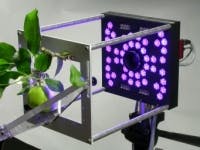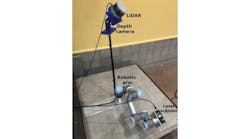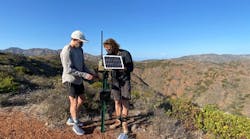Scientists from Walz GmbH have developed a CCD camera-based fluorometer that is able to measure plants’ photosynthetic activity to analyze the state of their health.
The system was developed in order to determine how trees and crops develop in the field, and to see how they react to illness, parasites, fungal infections, and climate change. The level of photosynthetic activity in a plant depends upon its growth phase and health, and In order to determine plant health, Walz scientists created an imaging system called the IMAGING PAM M-Series, which stands for Pulse-Amplitude-Modulated.
The system consists of a measuring head with integrated LED lighting and a digital camera. Samples of different sizes can be installed in the measuring head, depending on the model. Samples are protected from outside light and are illuminated with light pulses from blue or red LEDs, according to the case study.
MORE ARTICLES
GigE cameras provide vision in cell-imaging microscope system
Embryoscope imaging device may improve chances of In Vitro Fertilization
Medical Imaging: Polarization subtraction system characterizes cancer
Three different measuring heads (Maxi, Mini, and Microscopy) are utilized for the system, each of which differs in terms of the coverable field of each size. For the Maxi version, Walz chose a Manta G-145B GigE Vision camera. The Manta G-145B features a 1.4 MPixel Sony ICX285 EXView HAD CCD image sensor and runs at 15 fps at full resolution. For the Mini version, a Manta G-033B GigE Vision camera was used. The Manta G-033B features a 0.3 MPixel Sony ICX414 CCD image sensor and runs at 88 fps at full resolution.
Measurements begin with fluorescence stimulation using microsecond-short light pulses. With the aid of the AVT camera, the fluorescence yield is measured, with the intensity of the measurement light being so minimal that it cannot trigger photosynthesis. As a result, the plant behaves as though it were in darkness. The next step involves a short, saturating light flash, and once again, the fluorescence yield is captured by the camera. At 400 to 800 ms, this saturating flash is very short and can neither trigger photosynthesis nor damage the plant. The photosystems are completely closed by the strong light (up to ten times the intensity of sunlight). In this manner, the number of active centers in the sample can be determined.
"Following these two first steps, we know how the plant behaves in darkness and in maximum light," said Oliver Meyerhoff, a scientist with Walz GmbH. "After this calibration, we can combine measurements with different illuminations and interpret the values."
Images captured by the camera are then displayed and analyzed by proprietary ImagingWin Software from Walz, and the values are graphically represented using a color scale in an image.
View other items from our July 7 e-newsletter.
View the case study.
Share your vision-related news by contacting James Carroll, Senior Web Editor, Vision Systems Design
To receive news like this in your inbox, click here.
Join our LinkedIn group | Like us on Facebook | Follow us on Twitter | Check us out on Google +






